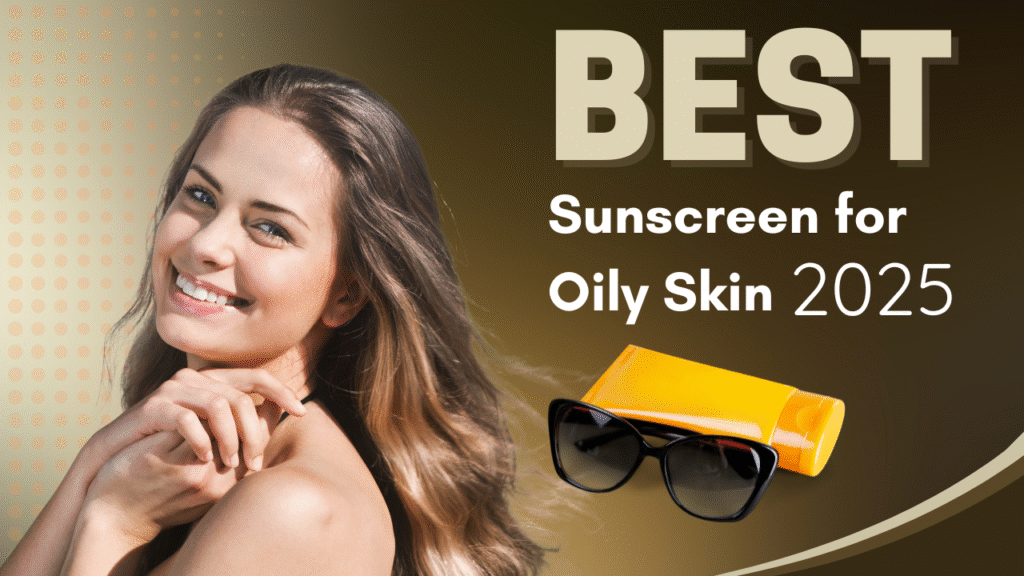
When it comes to skincare, sunscreen is not optional—it’s essential. But if you have oily skin, finding the right sunscreen that won’t clog pores, feel greasy, or cause breakouts can feel like a daunting task. You’re not alone in this struggle. Fortunately, dermatologists have weighed in, and the market now offers a variety of sunscreens specially formulated for oily and acne-prone skin types.
In this comprehensive guide from SkinRescueHub.com, we’ll walk you through everything you need to know about choosing the best dermatologist-recommended sunscreen for oily skin in 2025, including our top picks, what ingredients to look for (and avoid), application tips, and answers to common questions.
Why Sunscreen is Crucial for Oily Skin
You might think that because your skin is oily, you can skip sunscreen. In fact, that’s a myth. Oily skin is just as vulnerable—if not more so—to sun damage as any other skin type. UV rays can trigger inflammation, hyperpigmentation, early aging, and even skin cancer.
Moreover, many people with oily skin struggle with post-acne marks or dark spots. Without sunscreen, these can worsen due to sun exposure, making it harder for your skin to heal and look even-toned.
So, don’t let oily skin stop you from protecting your face. The trick is to find the right sunscreen that works with your skin—not against it.
What Dermatologists Recommend in Sunscreens for Oily Skin
🔍 Look for:
Oil-Free / Non-comedogenic Formulas – These prevent clogged pores and breakouts.
Gel-Based or Water-Based Textures – Lightweight, fast-absorbing, and matte-finish.
Matte Finish or Sebum-Control Properties – Controls shine throughout the day.
Broad-Spectrum Protection – Shields against both UVA (aging) and UVB (burning) rays.
SPF 30 or Higher – Minimum recommendation for daily wear.
Ingredients like Niacinamide, Zinc Oxide, Silica, or Salicylic Acid – Help control oil, soothe inflammation, and prevent acne.
❌ Avoid:
Heavy Cream Formulas – These can worsen oiliness and clog pores.
Alcohol-Based Sunscreens – They might feel dry initially but can cause rebound oiliness.
Added Fragrances or Dyes – Can irritate sensitive, acne-prone skin.
Top Dermatologist-Recommended Sunscreens for Oily Skin (2025)
Here are the most effective, dermatologist-approved sunscreens that are perfect for oily skin. These are lightweight, non-comedogenic, and provide long-lasting sun protection without making your face greasy.
1. Neutrogena Ultra Sheer Dry Touch SPF 50+
Type: Chemical
Texture: Lightweight, dry-touch formula
Why it’s great:
Leaves a matte finish
Doesn’t clog pores
Excellent for daily wear under makeup
Water-resistant
2. La Roche-Posay Anthelios UVMune 400 Oil Control SPF 50+
Type: Hybrid (Chemical + Mineral)
Texture: Fluid, non-greasy
Why it’s great:
Specifically formulated for acne-prone and oily skin
Contains Airlicium™ to absorb excess oil
Dermatologist-recommended across Europe
3. Minimalist Sunscreen SPF 50 PA++++
Type: Hybrid
Texture: Gel-based
Why it’s great:
Fragrance-free and non-comedogenic
Includes Niacinamide + Vitamin E for extra nourishment
Suitable for Indian humid weather
No white cast
4. Re’equil Oxybenzone & OMC Free Sunscreen SPF 50
Type: Physical + Chemical
Texture: Matte finish
Why it’s great:
Free of harsh chemicals
Silica-based formula for oil absorption
Perfect for sensitive and acne-prone skin
5. Fixderma Shadow SPF 50+ Gel
Type: Broad-Spectrum (Hybrid)
Texture: Transparent gel
Why it’s great:
Recommended by Indian dermatologists
Sweat and water-resistant
Doesn’t leave a white residue
6. DermaCo Ultra Matte Sunscreen Gel SPF 60
Type: Chemical
Texture: Matte gel
Why it’s great:
Oil-control formula
PA++++ rated for high UVA protection
Feels like a primer, great under makeup
7. CeraVe Hydrating Mineral Sunscreen SPF 30
Type: Mineral (Zinc Oxide + Titanium Dioxide)
Texture: Lightweight lotion
Why it’s great:
Contains ceramides + niacinamide
Fragrance-free & hypoallergenic
Great for those with sensitive + oily skin combo
How to Apply Sunscreen on Oily Skin – Tips from Experts
Always apply on clean, dry skin. Use a gentle, oil-free cleanser first.
Moisturizer is optional – If your sunscreen is hydrating enough, you may skip it.
Use the 2-finger rule – Squeeze two fingers full of sunscreen for your face and neck.
Wait 15 minutes before sun exposure.
Reapply every 2–3 hours, especially if you’re sweating or outdoors.
Pair it with other oil-control products like niacinamide serums or clay masks (at night).
FAQs – Best Sunscreen for Oily Skin
❓ Can sunscreen worsen acne?
No—only if you’re using the wrong kind. Choose non-comedogenic sunscreens specifically designed for oily/acne-prone skin.
❓ Should I reapply sunscreen if I’m indoors?
Yes—if you’re near windows or use digital screens for long hours, reapplication every 4–6 hours is still recommended.
❓ Can I skip moisturizer if I use sunscreen?
If your sunscreen has hydrating ingredients, it can double as a moisturizer, especially in hot, humid weather.
❓ What SPF is enough for oily skin?
SPF 30–50 is ideal. Higher is better if you’re outside frequently or have acne-prone skin with pigmentation issues.
Stay protected, stay glowing. 🧴✨
Got a favorite sunscreen that’s worked for you? Drop a comment below or tag us on Instagram @SkinRescueHub!





